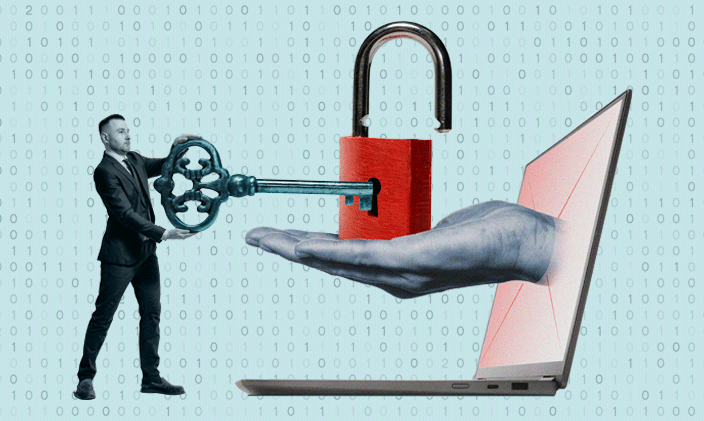What is malvertising and how can you prevent it?

Written by Michael Feder

Reviewed by Kathryn Uhles, MIS, MSP, Dean, College of Business and IT

Over the past decade, hackers have grown more advanced and confident in their attempts to steal sensitive information. Cybercriminals will attempt to access bank details, passwords and other private data to disrupt a computer or a network’s security. Known collectively as malware , these malicious advertising programs are often difficult to deactivate, particularly once a hacker has gained access to your device, server or network.
In the past, a strong password and safe internet browsing habits could usually keep you safe from hackers. Today, that’s not enough. The future of cybersecurity will likely require additional protective measures, including firewalls and VPNs, to keep your personal and professional information safe.
In 2021, hackers attempted 5.4 billion malware attacks worldwide. Though that figure is considerably down from the 10.5 billion attacks in 2018, it still represents a large problem for people concerned about their digital information.
An estimated 450,000 new pieces of malware and potentially unwanted applications are registered daily by the IT security institute, AV-TEST. And according to Deloitte, more than 90% of cyberattacks
begin with a malicious email, which, once opened, allows a hacker access to private data.
Malvertising — the use of malicious online ads to illegally distribute malware — is just one way hackers work to gain access to private data. Typically, hackers use malvertising to exploit vulnerabilities and inject malware directly into online advertisements. Hackers can even use malvertising across legitimate websites: When people click on innocent-looking ads, they can inadvertently trigger an upload of malicious code.
Today, malvertising is steadily gaining steam as an aggressive form of malware, one that can impact device health and result in lost information.
How does malvertising affect your devices?
Malvertising can affect a variety of devices, including computers, tablets and mobile phones. In fact, any device that stores passwords and bank details may be susceptible to malvertising. Malvertising can also affect a device even before hackers access sensitive information.
Slow operating speeds are one of the first signs of malware on your device. If webpages take longer to load, messages take longer to send or programs take longer to open, your device may be infected by malware as a result of malvertising. As malware attempts to access your data, it typically consumes large portions of your device’s memory and processing power, resulting in slower processing speed.
Then, malware works to gain access to your files quickly. As it does, you may notice you have trouble accessing your private information. For example, you might find yourself locked out of a database storing passwords. Similarly, you might discover that you can no longer access digital financial records.
Pop-up messages and other forms of spam are other indicators of malvertising. You might begin to notice unexpected redirects when web browsing, new search toolbars or unfamiliar programs. You might also encounter spam messages, freezing screens or disabled firewall tools.
How to prevent malvertising
No matter how proactive you are about avoiding malware, malvertising is intimidating. Fortunately, you can take steps to prevent malvertising or limit the damage if it gains access to your devices.
“Advice I often give is to avoid clicking on ads all together, no matter how legitimate they look. Users are better off doing a Google search for something that catches their eye, rather than clicking on an ad,” shares Kathryn Uhles, the associate dean of IT at University of Phoenix.
Install antivirus software
One of the first preventive steps is to install an antivirus program on your device. Look for antivirus programs that are easy to manage and that regularly scan for malware.
It’s also important to find an antivirus program that backs up your important files so that, should malvertising compromise the security of your device, your files will be secure.
Real-time scanning often separates the best antivirus programs from the rest. If you’re suspicious of a particular advertisement, or you simply need the peace of mind that your device is secure from any malvertising efforts, your antivirus program can run an on-demand scan to secure your files. Then, if the scan identifies unfamiliar files, you can take steps to eliminate them.
Use ad-blockers
Ad-blockers can also help protect your device from malvertising attacks. While antivirus programs protect your entire device from malware attacks, ad-blocking programs scan your device specifically for malvertising. This feature makes ad-blockers extremely valuable in preventing malvertising attempts before they materialize.
Depending on your ad preferences, ad-blockers can function in a few ways. Many ad-blocking programs can disable all ads on your device. If you want to see personalized ads from specific retailers you trust, you can choose to have your ad-blocker filter ads before they’re shown. As an added feature, many ad-blockers can also disable ad tracking , which prevents your device from sharing personal information with targeted advertisers.
Disable plug-ins
Plug-ins are specific pieces of software that customize your apps or internet browsing process in some way. For example, some browser plug-ins might help you take notes, capture screenshots or locate coupons for an online purchase you’re considering. Despite their usefulness, plug-ins always carry a cybersecurity risk. Many hackers disguise malvertising as a helpful plug-in . Once an individual downloads that plug-in, hackers can easily access their information.
To better protect against malvertising, consider disabling some or all plug-ins. If you keep a plug-in active, make sure to research its creator. Read verified user reviews about the plug-in to ensure that it operates well and is secure against malvertising and other forms of malware.
If a plug-in is no longer supported by its developer, it can be hacked by cybercriminals. Even if you trust a particular plug-in, check to ensure it receives regular security updates. These updates help protect plug-in code against new forms of malvertising.
Update your devices
Updating your devices is one of the best ways to keep them safe from malvertising. Check your device to determine whether updates are automatic or manual. Schedule time to download new operating systems that guard against emerging malvertising forms if you need to manually update your devices.
Once you update your device, check to see if your device’s applications have corresponding updates. Ensure you update both your device and all programs to avoid discrepancies between your operating system and program systems.
Update your device security
Downloading security programs for your device is a great first step toward keeping your information safe. However, it’s also important that you commit to regularly updating device security. Updating security programs can help improve your device’s efficiency while preventing new forms of malvertising.
Consult a professional
As hackers develop more aggressive forms of malvertising, information technology professionals can help reduce the risk of malvertising.
You can learn more by pursuing a career in cybersecurity or a related online technology degree
. By gaining a bachelor’s degree in cybersecurity, you’ll learn some of the more necessary, foundational cybersecurity skills.
Aspiring cybersecurity experts can further improve their skills through one of several Master of Information Systems degrees. These programs work to educate cybersecurity leaders through developed skills in information systems management, programming and computer science.
Cybersecurity education at University of Phoenix
Whether you’re seeking to gain a basic understanding of cybersecurity or you’re a working professional looking to expand your skills, University of Phoenix offers online course collections and bachelor’s and master’s degrees in cybersecurity and related fields.
- Certified Ethical Hacker Course Collection
— This course collection can help you prepare for the EC-Council Certified Ethical Hacker (CEH) certification exam. Topics include the phases of ethical hacking, recognizing weaknesses and vulnerabilities of a system, social engineering, IoT threats, risk mitigation and more.
- Certified Incident Handler Course Collection
— This course collection can help you prepare for the EC-Council Certified Incident Handler (ECIH) certification exam. This specialist certification focuses on how to effectively handle security breaches.
- Certified Network Defender Course Collection
— This course collection can help you prepare for the entry-level EC-Council Certified Network Defender (CND) certification exam. Courses focus on protecting a network from security breaches before they happen.
- Computer Hacking Forensics Investigator Course Collection
— This course collection can help prepare you for the EC-Council Computer Hacking Forensics Investigator (CHFI) certification exam. You’ll learn about the latest technologies, tools and methodologies in digital forensics, including the dark web, IoT, malware, the cloud and data forensics.
- Bachelor of Science in Cybersecurity
— This online program teaches vital IT skills such as security policies, network security, cybersecurity and more.
- Master of Science in Cybersecurity
— This online program explores in depth such skills and topics as cybersecurity, security policies and vulnerability.

ABOUT THE AUTHOR
A graduate of Johns Hopkins University and its Writing Seminars program and winner of the Stephen A. Dixon Literary Prize, Michael Feder brings an eye for detail and a passion for research to every article he writes. His academic and professional background includes experience in marketing, content development, script writing and SEO. Today, he works as a multimedia specialist at University of Phoenix where he covers a variety of topics ranging from healthcare to IT.

ABOUT THE REVIEWER
Currently Dean of the College of Business and Information Technology, Kathryn Uhles has served University of Phoenix in a variety of roles since 2006. Prior to joining University of Phoenix, Kathryn taught fifth grade to underprivileged youth in Phoenix.
This article has been vetted by University of Phoenix's editorial advisory committee.
Read more about our editorial process.
Read more articles like this:





